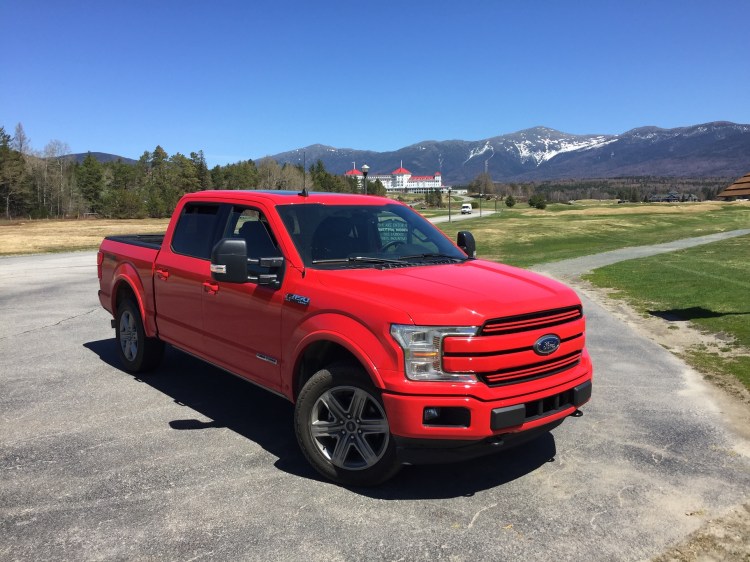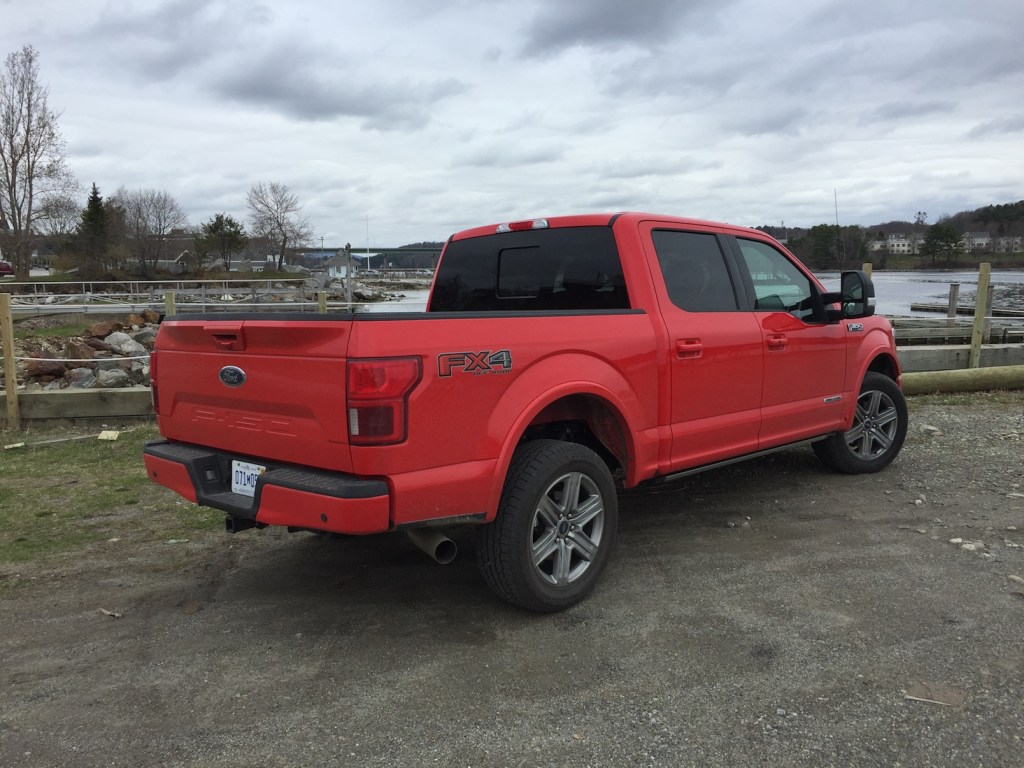WATERBURY, VT. – As you head east on U.S. Route 2 from Montpelier back to Maine, the main thoroughfare carrying northern New England’s commerce is a tortured two-track of broken pavement.
Snaking along the valleys and hills, Route 2 is the epitome of what infrastructure investment should mean. A large grader plowing up the pot-holed pavement might produce a better driving surface. It certainly could not be worse.
Happily, driving the newest Ford F-series pickup with its innovative Powerstroke diesel engine provides the isolation and comfort necessary to navigate such a test track of travel torture. Quieter and smoother than the Lexus sedan (to be reviewed next week) – almost as fuel-efficient, too – this new Ford proves how much the market for pickups has changed.
Ford has been willing to push established paradigms with its pickups lately. The first with aluminum bodies to save weight, the first to embrace turbo-V-6 engines for improved power and fuel economy (three in the lineup now), plus this new 3 .0-liter V-6 turbo-diesel engine, illustrate how Ford has increased its dominance within the category that it has led for 41 straight years.
Add the expressive Raptor as well as the planned production of a limited edition Raptor with a 700 hp supercharged version of the Mustang GT500’s new motor, and you can see that Ford readily embraces its pickup leadership position. Place your order now for that super-Raptor. There will be only a few.
Ford is also working on another innovative F-series powertrain. With its $500 million investment in Rivan, the electric truck company, Ford is obviously devoting resources to what the future could hold by offering the option of a fully electric pickup. While a Tesla-priced pickup could prove to be low-volume, there certainly is a halo effect for the company that first perfects a functional, working electric pickup that suits American tastes.
We’ve recently chronicled the virtues of the F-150: silent, comfortable, well-endowed with the features we use and want. In Lariat trim (starting at $46,510; more than $60,000 as shown here) you can add dual-panel sunroof, power sliding rear window, tow package with trailer-parking assist and dual-pane tow mirrors, plus heated and cooled leather seating.
Navigation on the Sync 3 screen, power folding running boards, and electric shift 4WD round out a cabin full of riches.
The Powerstroke engine is the hook here. A 3.0-liter V-6 borrowed from Land Rover, and originally developed by Peugeot, the turbomotor makes 250 hp and a potent 440 pound/feet of peak torque running through a slick 10-speed automatic.
EPA estimates are 20/25/22 mpg for CrewCab 4WD models and 22/30/25 for extended cab 2WD trucks. After 1,300 miles, our realized economy was 25.8 mpg, beating the EPA highway estimate. Range is more than 650 miles per fill-up.
Down the road, you never hear a hint of diesel clatter. In fact, you hear no engine noise at all, and there is no diesel smell, either. Power delivery is very linear, very smooth. If you thought an Ecoboost turbo-six was impressive in an F-series, the Powerstroke will recalculate your impressions just as swiftly.
The Powerstroke engine adds $4,000 to the sticker over the standard 2.7-liter Ecoboost, and is $3,000 more than the optional 5.0-liter V-8 – with more torque on tap than both. A DEF fluid fill-pipe rests next to the diesel spigot.
Just west of St. Johnsbury, road conditions improve dramatically. From here to the border crossing into Lancaster, N.H., road improvements are evident with a wider, smoother road. Increased truck traffic all the way to Gorham, N.H., and Bethel, Maine prove how much commerce depends on this serpentine highway.
Several long days in the saddle of this Ford were a solid reminder of how good today’s pickup trucks are – displacing luxury cars for many owners. The cabin’s hushed competence, the fluid operation and access of controls, plus the general ease of use (those power running boards are sweet) the F-series is a winning platform. With no complaints or gripes in the logbook, it was hard to see the Ford depart.
There has long been a sentiment that if domestic automakers could build a 30 mpg full-size pickup, their license to print money would be assured for years. This F-150 demonstrates that the technology is much closer, as turbocharged gasoline and diesel engines are proving very capable at meeting towing needs (10,100 pounds here) and overall driving expectations.
Better fuel economy also means lower fuel tax revenues, a problem too long ignored, but unfortunately evident throughout much of New England.
Send questions/comments to the editors.





Comments are no longer available on this story